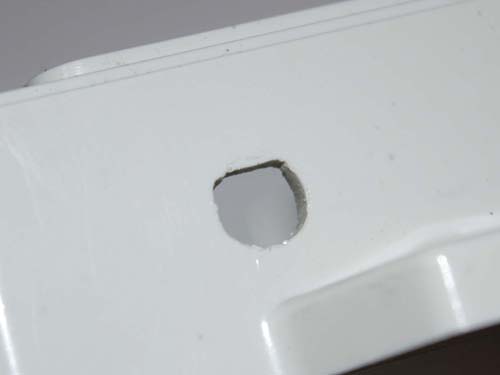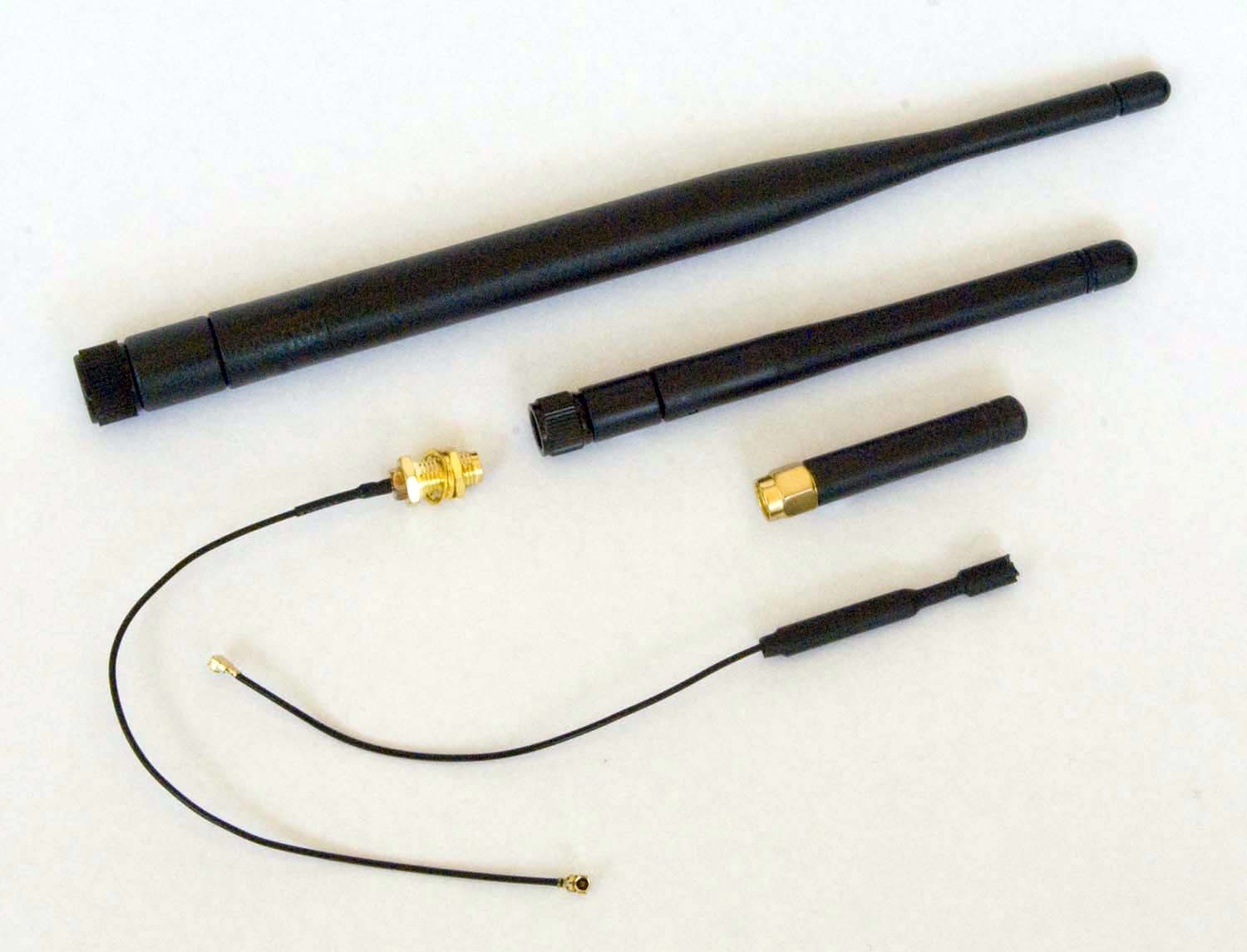LoRa Antennae
If you're not using something like an ALF4all Processor Board or the LoRa-Pi board with an SMA connector, which is effectively in a fixed location inside an enclosure, the most flexible approach is to use the IPEX/U.Fl connector option and simply locate the antenna where it's convenient. Even better, where possible, is the compact antenna provided with some of the Heltec boards (at bottom in the photo below)—it can be housed inside the enclosure, so no hole required!
The simplest way to mount pigtal-connected antennae (the upper three in the above photo) is to drill a 6mm hole in a suitable location on the enclosure.
The SMA connector on pigtails, however, actually has a flat face on the threaded section so that, if it is mounted in a hole of matching geometry, it will not turn in the hole while the lock nut is being tightened. To take advantage of this feature then, we need to drill a slightly smaller (5.5mm) hole, then file it out to the correct shape with a matching flat face.
Connector Cut-Out
| Pigtail SMA Connector | Enclosure Cut-Out |
|---|---|
 |
 |
Antenna SMA Connector
Antenna Performance
I purchased all of the antennae illustrated above because, initially, I had no idea what level of performance the various options offered nor exactly what level of performance I was going to require for my applications. I effectively started with the smallest antenna—the IPEX spring antenna from Heltec—because they were provided with the first LoRa modules I purchased from Heltec.
I also purchased the 2dBi glue rod antenna from Heltec, although they are available through AliExpress and other online sources.
Both of the dipole antennae—the larger 5dBi unit and the smaller 2dBi unit—that I use were sourced from Rocket Scream.
In the event, I have generally used the two extremes in my applications to date. Initially, I used the 5dBi dipole antenna for both the Gateway Node and Nodes located 'outside'—these Nodes (the 'Weather Station' and AWTS monitor) are currently located 50-100m from the Gateway Node—because the 'commercial' tank monitoring units that I had used these. More recently, however, I have used the small spring antenna on both the Gateway Node and an 'outdoor' Node located about 30m from the Gateway Node, without any significant loss in performance, although all Nodes and the Gateway are in clear line of sight with each other, with only the walls of a timber framed and clad house separating the Gateway from the others.
I have Nodes of various [MCU] configuration spread around my house, all reading BME280 sensors and reporting through the Gateway—a distance of ~10-15m—using one of the three smaller antennae. All perform well in this environment, but the small spring antenna is far and away the easiest to house in an enclosure.
Further content pending...



